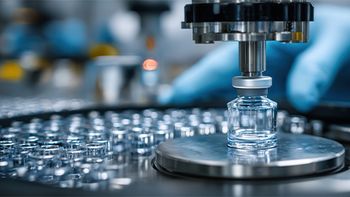
- Pharmaceutical Commerce - May/June 2017
Vaccine experts ponder a future supply chain
A growing process burden is forcing a modernized approach
The latest issue of
Today’s vaccine supply chain grew out of efforts that began in the 1960s to address smallpox (a successful eradication eventually) and then polio (an ongoing campaign). Along the way, vaccines were essentially handled in their own supply chain, with refrigerated depots, insulated containers and specialized logistics processes distinct from the range of general healthcare product deliveries. There are now efforts to integrate vaccine shipments with other healthcare products, but the same time, the volume and types of vaccines have grown by 50% since 2007. (The fact that an increasing number of biopharma drugs also require refrigeration seems to be outside the scope of the studies.) A common figure in the activity is that 40% of the cost of a typical vaccination program is taken up by the vaccines themselves. A 1% reduction in vaccine wastage is estimated to save $50 million by 2020. And, like commercial drug deliveries in some parts of the developed world, temperature monitoring is only a sometimes thing in vaccines in the developing world.
In “Gavi eligible” countries (Gavi, the Global Vaccine Alliance nonprofit, has selected some 55 underdeveloped countries that meet its application criteria), the state of cold chain equipment is poor: 50% depend on early-generation refrigeration equipment that often freezes vaccines; 20% have little or nothing and another 20% have significant breakdowns, leaving only 10% with the latest technology. McKinsey & Co. has worked with Gavi on a Cold Chain Equipment Optimization Platform since 2015 to improve this situation. Advances such as using solar direct-drive refrigeration will replace earlier, fuel-burning or “ice-lined" refrigerators (set up to deal with intermittent electrical power). Electronic temperature-monitoring equipment will also become more widespread.
Articles in this issue
over 8 years ago
The sales rep study I’d like to seeover 8 years ago
Survey tracks evolving health economics function in pharmaover 8 years ago
Is your corporate board equipped to monitor incentive programs?over 8 years ago
2017 Product Security Reportover 8 years ago
Compliance Package of the Year goes to Merck’s Zepatierover 8 years ago
How cloud-based IT systems address FDA validation requirementsover 8 years ago
Future look: The Impact of Biosimilars on Oncologyover 8 years ago
New science energizes the cancer marketover 8 years ago
A Conversation with John Chiminski, CatalentNewsletter
Stay ahead in the life sciences industry with Pharmaceutical Commerce, the latest news, trends, and strategies in drug distribution, commercialization, and market access.




